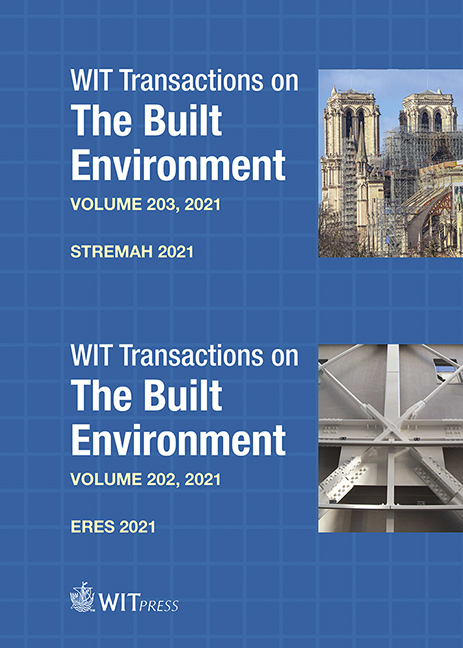ARCHIVE RESEARCH AS A DIAGNOSTIC AND COGNITIVE INVESTIGATIVE METHOD OF MEMORY OF THE MULTISTRATIFIED URBAN BUILT HERITAGE: A CASE OF URBAN ARCHEOLOGY
Price
Free (open access)
Transaction
Volume
203
Pages
12
Page Range
39 - 50
Published
2021
Size
2,781 kb
Paper DOI
10.2495/STR210041
Copyright
Author(s)
LUCREZIA LONGHITANO, SANTI M. CASCONE, STEFANO CASCONE, GIUSEPPE A. LONGHITANO
Abstract
The urban contexts that we live today are often the result of a stratification spontaneously followed over time, incorporating buildings in use in ancient times but abandoned as a result of the historical and cultural evolution of the city. This situation is very frequent in many historical centers, where archaeological buildings are located below the modern urban plan. An exemplary case of this situation is given by the Roman amphitheater of Catania. It was covered and used as a substructure for the new plan steal and for the buildings rebuilt after the earthquake of 1693 that destroyed the city. These reconversions of ancient structures cause several conservative problems, often difficult to understand and which must be investigated in an interdisciplinary way to understand their origins and solve them. The complexity of urban systems requires an inevitable multidisciplinary approach that combines archival analysis, historical, archaeological analysis, diagnostics, architectural, plant engineering and urban. This research aims to show, in particular, how the part of historical analysis of archival type can be a useful diagnostic survey tool to be applied in multi-layered contexts, through the example of the Roman amphitheater of Catania which today is in a precarious state of conservation and accessibility that requires intervention. This work was carried out by studying the administrative documentation of the 19th century produced by responsables for the protection of the historical buildings of Catania, kept at the State Archive of Catania, and allowed to understand the conservative events of the heritage architectures and to deepen the knowledge of the causes of the degradation that today the monument undergoes, demonstrating how such problems have a long history never radically resolved.
Keywords
urban stratification, archive research, history of conservation, diagnostic




